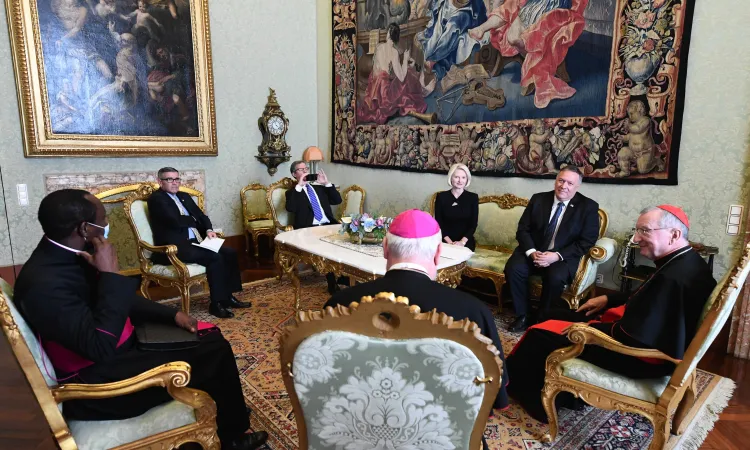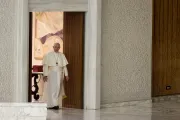The Vatican foreign minister also referred to the promotion of so-called 'new rights', among them sexual, reproductive, and gender-based rights, often attached to agendae that attack religious freedom.
So, Archbishop Gallagher, on the one hand, addressed the criticism to the Holy See, without mentioning specific cases like China. "The Holy See never does that," Archbishop Gallagher later explained to journalists.
On the other hand, Archbishop Gallagher focused on a broader view: he blamed the push for new rights, positioning the Holy See on the same page as the US. For example, President Trump made of the life issues one of the main points of his presidency and was also the first president to address a speech at the annual March for Life.
If Archbishop Gallagher broke the ice, Cardinal Parolin closed the conversation.
More in A Vatican Observer
In his remarks, Cardinal Parolin said that there is a negative and a positive approach in defending religious freedom. The negative approach, he said, "states simply that there should be no coercion in the practice of religion." On the other hand, the positive approach works to transform and correct the rationale behind the oppression of the faithful. This rationale consists in the radical autonomy of contemporary man. The Church combats this by showing people "the ultimate truth of their existence."
This way, Cardinal Parolin moved a mild criticism to the US approach, and at the same time made it clear that the Holy See not only is aware of the numerous violations of religious freedom, but also – in its own way – is on the front line in the fight to roll them back.
In a declaration informally delivered outside the official bulletin, the director of the Holy See Press Office stressed that "the parties presented their respective positions on the relations with the People's Republic of China, in a relaxed and cordial climate of respect." The meeting, the declaration went on, also zeroed in "on some conflict and crisis areas, particularly the Caucasian area, the Middle East and the East Mediterranean. The meeting lasted some 45 minutes."
Generally, the Holy See does not provide information about the bilateral meetings.
That a communication on the bilateral came out shows the Holy See considered the meeting relevant. Also, the Holy See aimed at smoothing any tension.
In the end, diplomacy is also a play, and all the actors involved have lines of dialogue to deliver, the script of which is determined broadly by national interest more or less informed by moral commitment. The Holy See has no particular interests. Its international agenda is the common good. This is the reason why the Holy See's diplomacy is so peculiar.



